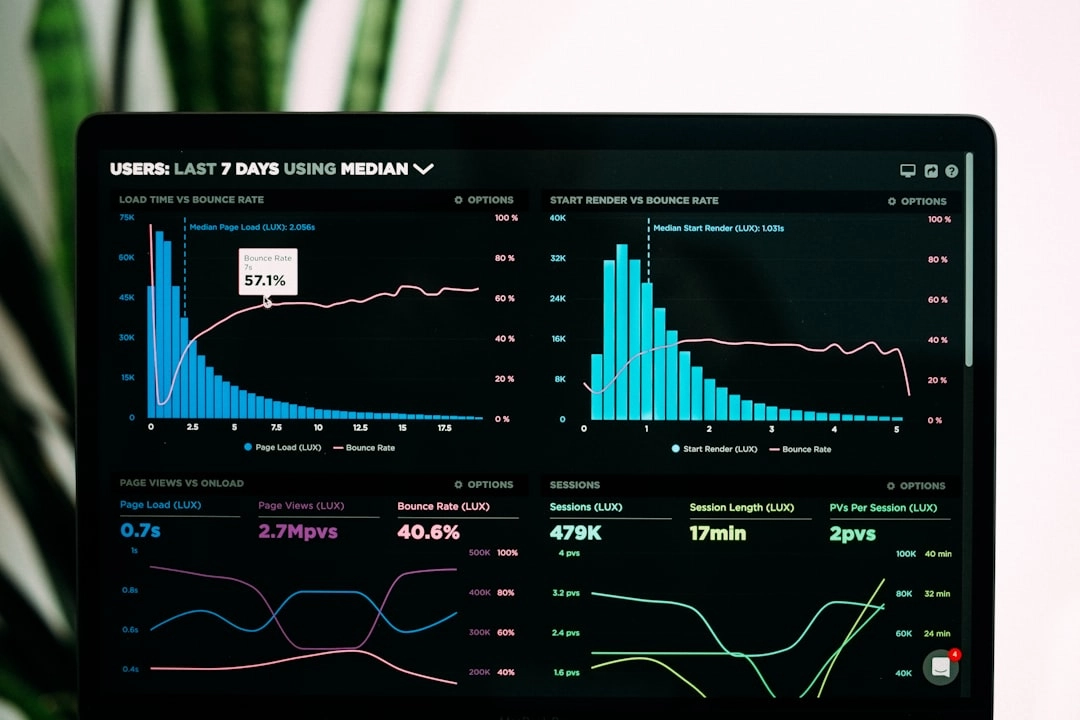In a nutshell:
- AI tools streamline data preparation tasks for data analysts.
- Tools like Tableau and Power BI aid in exploratory analysis by uncovering patterns and correlations in data.
- Pecan AI simplifies predictive model building and deployment with its user-friendly interface and automation capabilities.
- LLMs like ChatGPT enhance data analysis by understanding business concerns, improving SQL queries, and automating data exploration.
- The future of data analysis lies in AI, with tools revolutionizing every stage from data preparation to visualization and reporting.
Imagine having a team of highly skilled assistants at your beck and call, each one specializing in a different aspect of the data analysis process. From the meticulous task of data preparation to the explorative realm of uncovering patterns and trends, AI tools are stepping up to the plate, offering a suite of capabilities that can streamline your workflows and automate the tedious tasks that often bog down your analysis.
Artificial intelligence (AI) tools are becoming increasingly essential for data analysts. From data preparation to exploratory analysis, model building, and visualization, AI-powered tools offer a range of capabilities that can streamline workflows and automate tedious tasks.
Exploring the top AI tools can enhance efficiency and enable data analysts to uncover patterns in insights more effectively. These tools are perfect for a wide range of applications, including automating data preparation tasks, building predictive models, and creating compelling visualizations.
Photo by Walls.io on Unsplash
Data Preparation Tools
Data preparation is a critical phase in data analysis that involves cleaning, standardizing, and transforming raw data into a format suitable for analysis. It is perhaps the most time-consuming and crucial aspect of a data analyst's job.
However, AI-powered tools are rapidly transforming this area, automating the process and, in turn, reducing the time spent on data preparation.
Manual Data Preparation
Before the advent of these tools, data preparation was a manual and labor-intensive process. Data analysts previously had to write scripts and codes for transforming and cleaning the data, which was an arduous and time-consuming task. It generally included data extraction, recognition and treatment of missing and outlier data, standardization of data formats, and concatenation of multiple datasets. Unfortunately, this lengthy process took the focus away from the actual data analysis.
Pecan AI and Data Preparation
Given the drawbacks of manual data preparation, automated solutions like Pecan AI offer a refreshing change. Pecan AI offers a user-friendly platform that automates the data preparation process, freeing data analysts to focus more on data interpretation. The system handles outliers, missing data, and other issues in a seamless, automated way. It also excels at joining datasets to extract maximum predictive information, providing a solid foundation for machine learning algorithms to work accurately and efficiently.
The best AI tools for data analysts are transformative in preparing data for analysis. These tools not only streamline the process but also ensure accuracy and efficiency, offering valuable time and resources back to the analysts.
Exploratory Analysis Tools with AI
Shifting our focus from data preparation, we now turn toward the exploratory analysis segment of the data analysis pipeline. The right tools can help analysts uncover structures, patterns, and key variables within the data, providing initial insights and assisting in identifying the best methods for further analysis.
Tableau
Tableau is undoubtedly among the best AI tools for data analysts, particularly in the realm of exploratory analysis. The interactive visual analytics tool helps analysts discover patterns, trends, and correlations in data that may not be easily noticed in standard tabular format.
One of Tableau's key features is the ability to create interactive dashboards, enabling users to explore vast amounts of data quickly and conveniently. Tableau also supports drag-and-drop clustering, which can uncover patterns within datasets based on selected variables. The tool's intuitive "Show Me" feature aids in selecting the best visualization type for a given dataset, streamlining the exploratory process.
Power BI
Microsoft Power BI is another dynamic tool for exploratory analysis. Like Tableau, it offers interactive visualizations that allow data analysts to explore and understand complex datasets intuitively. Power BI’s Q&A feature is a significant advantage, allowing users to pose natural language queries and receive answers in the form of charts or graphs.
Power BI also supports integration with Microsoft’s AI tools, boosting its exploratory analysis capabilities. For instance, Power BI's Key Influencers visual helps analysts understand the factors that drive metric outcomes, while its AI-powered decomposition tree enables drilling down into data to find patterns and insights.
Both Tableau and Power BI provide a host of features that make the task of exploratory analysis simpler and more efficient. By visualizing data in different ways, these tools allow data analysts to understand the underlying patterns and structures better. This enables them to extract valuable insights effectively.
Photo by Campaign Creators on Unsplash
Model Building and Deployment Tools
As we advance along the data analysis pipeline, we can’t forget the role of model building and deployment. This phase requires substantial technical skills and is commonly associated with a steep learning curve due to the requirement of coding knowledge.
However, the new generation of AI tools is starting to reshape this landscape, bridging the gap and making model building much more approachable for data analysts. One tool worth noting in this regard is Pecan AI.
Why Data Analysts Should Explore Building Predictive Models
Building predictive models allows data analysts to look ahead, predicting future trends based on historical data. This seemingly complex task is made simpler with AI tools that do not require much technical or coding knowledge.
These tools employ machine learning algorithms and other advanced technologies to analyze past data and generate forecasts. This functionality can be a game-changer for businesses in terms of decision-making, as it allows them to anticipate market trends, customer behavior, and other critical factors affecting their operations.
Pecan AI for Model Building and Deployment
Pecan AI, apart from offering automated data preparation, also provides powerful features for model building and deployment. Designed with a user-centric approach in mind, Pecan AI requires no coding and offers a drag-and-drop interface to create predictive models.
The platform uses automated machine learning technology to create, evaluate, and deploy models, turning a typically complex task into a manageable and user-friendly process. Pecan AI supports regression and classification models. These models' outputs can be easily integrated into various business systems and workflows, making Pecan AI an efficient and versatile tool for data analysts.
Pecan AI also provides insights into each model's performance, highlighting areas of high impact, and offering recommendations for model improvements. This helps data analysts to build accurate models and understand the factors influencing the predictions.
Pecan AI is emerging as one of the best AI tools for data analysts in model building and deployment. Its user-friendly interface, coupled with powerful automation capabilities, simplifies predictive modeling, saving time and allowing data analysts to focus on deriving valuable insights.
Visualization and Reporting Tools
After the exploratory analysis and model-building stages, visualization and reporting form the final phase of the data analysis pipeline. This is where raw data and initial findings are transformed into compelling visuals, charts, graphs, and reports – the elements that turn numbers into narratives and make the data easily interpretable for decision-makers. To aid in these tasks, AI tools like Tableau and Microsoft Power BI offer unparalleled features.
Tableau
Tableau is renowned for its user-friendly interface and powerful data visualization capabilities. As for reporting, Tableau allows data analysts to create visually appealing, interactive dashboards that consolidate multiple visualizations into a single, interactive interface.
Tableau's dynamic dashboards allow users to filter, sort, and drill into the details of the data with a few clicks. The tool also offers real-time data updates, ensuring that decision-makers always have access to the most recent data.
Another standout feature of Tableau is its ability to create story points. These are sequences of visualizations and associated captions that tell a story, helping to express the insights drawn from the data in a narrative form that is easy to understand for non-technical audiences. This aids considerably in decision-making by providing clear and visually compelling insights.
Microsoft Power BI
Microsoft Power BI is an equally potent player in the field of data visualization and reporting. It offers a suite of business analytics tools that deliver insights throughout an organization. Like Tableau, Power BI allows you to connect to hundreds of data sources, simplify data prep, and drive ad hoc analysis.
Power BI is particularly advantageous for Microsoft-based organizations, as it seamlessly integrates with other Microsoft products. Its robust reporting features allow analysts to quickly create rich, customizable dashboards from various live data sources. The dashboards are interactive and can be shared with anyone within the organization.
Power BI's reporting tools are dynamic and flexible, with drag-and-drop functionality that makes report creation a breeze. Power BI also supports natural language queries, which means users can ask questions about the data in plain English and receive answers in the form of a report or graph. This makes the tool highly accessible, even for non-technical users.
Both Tableau and Power BI provide robust features for data visualization and reporting. These tools support the creation of clear, compelling visuals that can effectively communicate the insights gleaned from data analysis. This not only aids in decision-making but also helps to transform the way organizations operate and grow.
LLM-Based Methods for Improving Analysts' Work
Language Learning Models (LLMs) like ChatGPT have been gaining traction in the data analysis field for their ability to understand business concerns and improve SQL queries. These AI tools use deep learning techniques to generate human-like text based on the input provided. They can be employed in data analysis to automate and improve various tasks.
Using LLMs Like ChatGPT to Understand Business Concerns
ChatGPT can be trained to understand business concerns by feeding it relevant data and scenarios. Once trained, it can answer queries, provide suggestions, and even engage in a detailed business discussion. This can assist data analysts by automating parts of their process and providing them with insights they may have overlooked.
Improving SQL Queries
LLMs can also improve SQL queries, a critical skill for any data analyst. Based on the task at hand, these tools can suggest improvements in the query logic, optimize the query's performance, or even write SQL queries from scratch.
Identifying the right data to use in training machine learning models also requires using SQL queries, in most cases. In Pecan's platform, Predictive GenAI capabilities use LLMs' strengths to help clarify the precise predictive question you want to explore and then auto-generate the correct SQL query that builds the right training dataset. Here again, AI makes data analysts' lives easier and extends their ability to make significant business impact with predictive AI.
Automated LLM Tools for Data Exploration and Simple Visualizations
Some LLM tools also offer capabilities for automated data exploration and simple visualizations. These tools can quickly analyze large datasets and provide a high-level overview, pointing out interesting trends and anomalies. This can be particularly useful in the initial stages of data analysis, leading to faster, more efficient exploration of data.
Overall, LLMs can significantly boost a data analyst's productivity and quality of work. They are quickly becoming one of the best AI tools for data analysts, transforming their approach to work and delivering more profound insights from data.
Photo by Copernico on Unsplash
Bottom Line
The future of data analysis is inextricably intertwined with artificial intelligence. The sheer range of available tools from the data preparation stage through to the final visualization stage is a testament to the power of AI in automating and simplifying complex tasks.
Alteryx and Pecan AI are leading the way in data preparation, automating the tedious process of cleaning and standardizing data. This frees up analysts to focus on interpretation and insight. For exploratory analysis, tools like Tableau and Power BI offer unrivaled capabilities, allowing analysts to visually discover patterns and correlations within data. Pecan AI further elevates the realm of data analytics with its model-building and deployment features, simplifying the creation and implementation of predictive models.
The same excellence carries over to the final stages of data analysis. Tableau and Power BI continue to be the go-to tools for visualization and reporting, offering powerful functions for transforming insights into compelling narratives. LLMs like ChatGPT also promise to revolutionize the work of data analysts with their ability to understand business concerns, improve SQL queries, and provide automated data exploration and visualization.
Want to give Pecan AI a spin today? As the only predictive AI tool built specifically for data analysts, we think you'll find it intuitive and fast. Try a free trial now.








